
There's no PCI-E switch to enable extra bandwith, so you're limited to just two slots offering full x16 bandwidth, with three dropping to x16/x8/x8, and four at x16/x8/x8/x8 - with 40-lane CPUs of course. As the primary and secondary 16x PCI-E slots are essentially treble-spaced, there's a huge gulf between them allowing for great airflow to the first card too.
To aid in quick installation of multi-GPU setups, there's a switch next to the U.2 port that allows you to select the number of graphics cards you'll be using, with the board's RGB lighting indicating the slots you need to drop your cards into for the best performance.
As well as the onboard SupremeFX audio, Asus also includes a SupremeFX Hi-Fi front panel amplifier, sporting an ESS 9018M2M SABRE DAC and Cirrus Logic analogue-to-digital convertor along with 3.5mm and 6.3mm outputs and 3.5mm input, all in a 5.25in bay device. You also get the obligatory M.2 and U.2 connectors with SATA Express thankfully having been ditched.
With 40-lane CPUs, only in four-way setups will you see bandwidth issues surface, with the first slot running at x16 speed meaning both the U.2 and M.2 slot would be disabled - clearly not an issue the overwhelming majority of PC users, especially given that Nvidia SLI only officially supports two cards now, although there are exceptions for extreme overclockers looking to break benchmark records.
Now for the niggles, and there are one or two fairly significant ones. Firstly, in terms of layout we hit upon two big snags. The 8-pin EPS 12V connector is placed so close to the VRM heatsink that a small plastic flange on our cable connector fouled the heatsink and the only way to get the cable was to force it, leaving the whole thing sitting at an angle and putting pressure on the socket - far from ideal.
This was the case with both the stock Corsair cables on our AX860i and after-market CableMod ones, where the flange is actually a small clip holding two 4-pin connectors together. It's worth checking your own PSU to see if this flange is present. It's easy to remove with a small file if necessary as the two sections of the connector are held together plenty tight enough when they're plugged into the socket. Whether this is Corsair's or Asus's fault we're not entirely sure but you have been fairly warned.
The next niggle is, once again, the proximity of the primary graphics slot to the mid-board heatsink. This has been a recurring issue with a number of boards recently, and not just Asus, where the slot and heatsink are so close that it's impossible to get at the slot release lever without a flathead screwdriver. The location of the M.2 port isn't ideal either, as it means many graphics cards will be venting hot air straight onto the SSD - potentially causing throttling which has already been an issue with some of the faster drives.
Finally, it's a little disappointing to see that you can only use one M.2 drive out of the box. A PCI-E M.2 adaptor, which is included with the X99-Deluxe II, would have been welcome here - yes, the latest drives are capable of 3,000MB/sec+, but this is the Rampage we're taking about - if you can afford to build a system this expensive then we'd argue that you'd want the option of using two, probably in RAID for some ultimate willy-waving given that storage is actually one of the more exciting areas of the PC industry at the moment. We'd argue this would have been much more 'Rampage' than the fan hub header too.
Click to enlarge
To aid in quick installation of multi-GPU setups, there's a switch next to the U.2 port that allows you to select the number of graphics cards you'll be using, with the board's RGB lighting indicating the slots you need to drop your cards into for the best performance.
Click to enlarge
As well as the onboard SupremeFX audio, Asus also includes a SupremeFX Hi-Fi front panel amplifier, sporting an ESS 9018M2M SABRE DAC and Cirrus Logic analogue-to-digital convertor along with 3.5mm and 6.3mm outputs and 3.5mm input, all in a 5.25in bay device. You also get the obligatory M.2 and U.2 connectors with SATA Express thankfully having been ditched.
Click to enlarge
With 40-lane CPUs, only in four-way setups will you see bandwidth issues surface, with the first slot running at x16 speed meaning both the U.2 and M.2 slot would be disabled - clearly not an issue the overwhelming majority of PC users, especially given that Nvidia SLI only officially supports two cards now, although there are exceptions for extreme overclockers looking to break benchmark records.
Click to enlarge
Now for the niggles, and there are one or two fairly significant ones. Firstly, in terms of layout we hit upon two big snags. The 8-pin EPS 12V connector is placed so close to the VRM heatsink that a small plastic flange on our cable connector fouled the heatsink and the only way to get the cable was to force it, leaving the whole thing sitting at an angle and putting pressure on the socket - far from ideal.
Click to enlarge
This was the case with both the stock Corsair cables on our AX860i and after-market CableMod ones, where the flange is actually a small clip holding two 4-pin connectors together. It's worth checking your own PSU to see if this flange is present. It's easy to remove with a small file if necessary as the two sections of the connector are held together plenty tight enough when they're plugged into the socket. Whether this is Corsair's or Asus's fault we're not entirely sure but you have been fairly warned.
M.2 SSDs could potentially get toasty from Graphics card exausts like this one and can you see the PCI-E release lever? It's hidden almost out of reach and needs a screwdriver to get to it - Click to enlarge
The next niggle is, once again, the proximity of the primary graphics slot to the mid-board heatsink. This has been a recurring issue with a number of boards recently, and not just Asus, where the slot and heatsink are so close that it's impossible to get at the slot release lever without a flathead screwdriver. The location of the M.2 port isn't ideal either, as it means many graphics cards will be venting hot air straight onto the SSD - potentially causing throttling which has already been an issue with some of the faster drives.
Click to enlarge
Finally, it's a little disappointing to see that you can only use one M.2 drive out of the box. A PCI-E M.2 adaptor, which is included with the X99-Deluxe II, would have been welcome here - yes, the latest drives are capable of 3,000MB/sec+, but this is the Rampage we're taking about - if you can afford to build a system this expensive then we'd argue that you'd want the option of using two, probably in RAID for some ultimate willy-waving given that storage is actually one of the more exciting areas of the PC industry at the moment. We'd argue this would have been much more 'Rampage' than the fan hub header too.
Specifications
- Chipset Intel X99
- Form factor E-ATX
- CPU support Intel Socket 2011-v3 (Broadwell-E,Haswell-E, Xeon)
- Memory support Quad-channel, 8 slots, max 128GB
- Sound 8-channel ROG SupremeFX
- Networking Intel's I218V, Intel I211-AT, 802.11ac Wi-Fi
- Ports 1 x M.2 PCI-E x4 NVMe 32Gbps (PCI-E SSDs only), 1 x U.2 PCI-E x4 NVMe 32Gbps, 10 x SATA 6Gbps, 2 x USB 3.1 Type-A (ASMedia), 2 x USB 3.1 Type-C (ASMedia), 10 x USB 3.0 (4 via header), 6 x USB 2.0 ( 4 via header), 2 x LAN, audio out, line in, mic, optical S/PDIF out
- Dimensions (mm) 305 x 272
- Extras SupremeFX Hi-Fi DAC, 4-pin RGB LED extension cables, 2-way, 3-way and 4-way SLI bridges, USB driver flash drive, desktop Wi-Fi aerial, 4-channel fan extension header

MSI MPG Velox 100R Chassis Review
October 14 2021 | 15:04

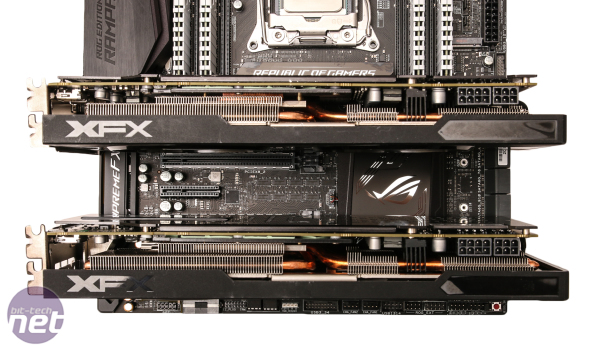
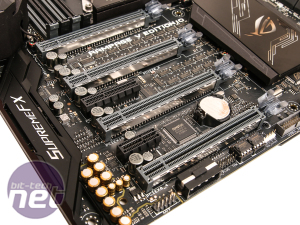
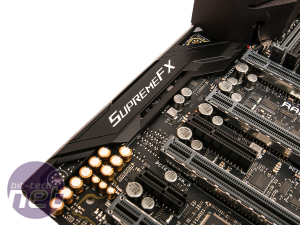

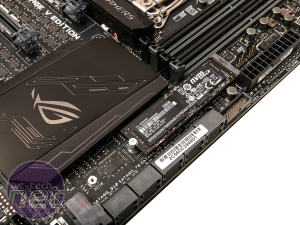

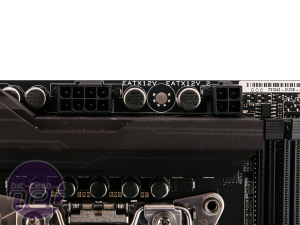
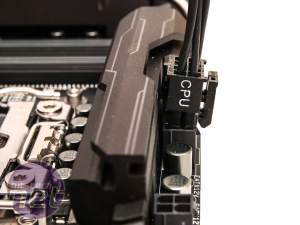
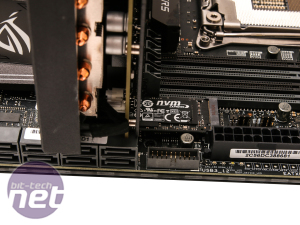
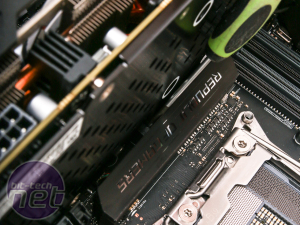
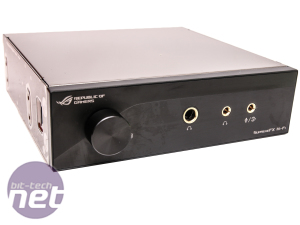
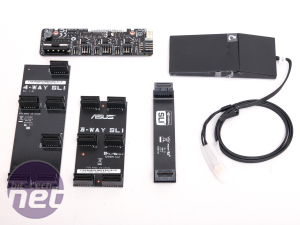







Want to comment? Please log in.